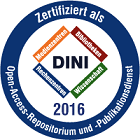Maurer, Leonard Ruben: Theoretical and Mass Spectrometric Studies of Low-valent Heavier Tetrel and Transition Metal-Tetrel Compounds. - Bonn, 2024. - Dissertation, Rheinische Friedrich-Wilhelms-Universität Bonn.
Online-Ausgabe in bonndoc: https://nbn-resolving.org/urn:nbn:de:hbz:5-78347
Online-Ausgabe in bonndoc: https://nbn-resolving.org/urn:nbn:de:hbz:5-78347
@phdthesis{handle:20.500.11811/12431,
urn: https://nbn-resolving.org/urn:nbn:de:hbz:5-78347,
doi: https://doi.org/10.48565/bonndoc-399,
author = {{Leonard Ruben Maurer}},
title = {Theoretical and Mass Spectrometric Studies of Low-valent Heavier Tetrel and Transition Metal-Tetrel Compounds},
school = {Rheinische Friedrich-Wilhelms-Universität Bonn},
year = 2024,
month = oct,
note = {This thesis comprises different areas of theoretical and experimental inorganic molecular chemistry. The thesis is split into three main parts.
After the most fundamental principles of computational chemistry are introduced, part A deals with theoretical studies carried out on low-valent silicon and germanium main group compounds. Innovative achievements by synthetically-working colleagues in our group were comprehensively studied by dispersion-corrected density functional theory (DFT) methods in the gas phase. Among the investigated molecules are the novel N-heterocyclic carbene (NHC) stabilized iminosilenylidenes (NHC)SiCNR, siladicarbenes Si(NHC)2 and siladiimides Si(NR)2, but also representatives of heavier ditetrelynes REE’R’ and ditetreleneylidenes RR’EE’ with E and E’ being silicon and/or germanium, supported by cyclic alkyl amino carbene ligands (CAACs). For the latter compounds, special attention is provided to the influence of the σ-donating and π-accepting CAAC ligands on the electronic structure in comparison to NHCs. Herein, the interpretation of both the canonical and localized molecular orbitals combined with the natural bond orbital (NBO) and natural resonance theory (NRT) methods proved to be insightful for the analysis of the wave function of the studied compounds.
Part B features a similarly straightforward computational analysis of heavier tetrel transition metal compounds. On the one hand, these include the asymmetrically coordinated digermyne cobalt complex [CoCp(CO)(RGeGeR)] and its derivatives, such as the carbonyl-free C2v-symmetric digermacobaltirene heterocycle [CoCp(RGeGeR)] or the digerma-cobaltacyclopentatrienes [CoCp(RGe(R’CCR’)GeR)], that can be regarded as insertion products of an alkyne into the formal Ge≡Ge triple bond of the digermyne cobalt complex. First steps on the elucidation and rationalization of the rich reactivity of these compounds are given in form of mechanistical pathways.
On the other hand, cationic group 10 tetrylidyne complexes [L3MER]+ were investigated, where the peculiar properties of the heavier tetrel atoms E = Si to Pb contribute to an unprecedented electronic structure of the resulting complexes, which differs from that of similar carbon analogues.
Standing on its own, Part C is meant to cover efforts in experimental mass spectrometry applied on group 6 transition metal germylidyne complexes [LnM≡GeR]. After a brief introduction into mass spectrometry, the technique is presented which leads to an inert measurement without significant sample decomposition, and relevant features of the corresponding mass spectra of these complexes are highlighted.},
url = {https://hdl.handle.net/20.500.11811/12431}
}
urn: https://nbn-resolving.org/urn:nbn:de:hbz:5-78347,
doi: https://doi.org/10.48565/bonndoc-399,
author = {{Leonard Ruben Maurer}},
title = {Theoretical and Mass Spectrometric Studies of Low-valent Heavier Tetrel and Transition Metal-Tetrel Compounds},
school = {Rheinische Friedrich-Wilhelms-Universität Bonn},
year = 2024,
month = oct,
note = {This thesis comprises different areas of theoretical and experimental inorganic molecular chemistry. The thesis is split into three main parts.
After the most fundamental principles of computational chemistry are introduced, part A deals with theoretical studies carried out on low-valent silicon and germanium main group compounds. Innovative achievements by synthetically-working colleagues in our group were comprehensively studied by dispersion-corrected density functional theory (DFT) methods in the gas phase. Among the investigated molecules are the novel N-heterocyclic carbene (NHC) stabilized iminosilenylidenes (NHC)SiCNR, siladicarbenes Si(NHC)2 and siladiimides Si(NR)2, but also representatives of heavier ditetrelynes REE’R’ and ditetreleneylidenes RR’EE’ with E and E’ being silicon and/or germanium, supported by cyclic alkyl amino carbene ligands (CAACs). For the latter compounds, special attention is provided to the influence of the σ-donating and π-accepting CAAC ligands on the electronic structure in comparison to NHCs. Herein, the interpretation of both the canonical and localized molecular orbitals combined with the natural bond orbital (NBO) and natural resonance theory (NRT) methods proved to be insightful for the analysis of the wave function of the studied compounds.
Part B features a similarly straightforward computational analysis of heavier tetrel transition metal compounds. On the one hand, these include the asymmetrically coordinated digermyne cobalt complex [CoCp(CO)(RGeGeR)] and its derivatives, such as the carbonyl-free C2v-symmetric digermacobaltirene heterocycle [CoCp(RGeGeR)] or the digerma-cobaltacyclopentatrienes [CoCp(RGe(R’CCR’)GeR)], that can be regarded as insertion products of an alkyne into the formal Ge≡Ge triple bond of the digermyne cobalt complex. First steps on the elucidation and rationalization of the rich reactivity of these compounds are given in form of mechanistical pathways.
On the other hand, cationic group 10 tetrylidyne complexes [L3MER]+ were investigated, where the peculiar properties of the heavier tetrel atoms E = Si to Pb contribute to an unprecedented electronic structure of the resulting complexes, which differs from that of similar carbon analogues.
Standing on its own, Part C is meant to cover efforts in experimental mass spectrometry applied on group 6 transition metal germylidyne complexes [LnM≡GeR]. After a brief introduction into mass spectrometry, the technique is presented which leads to an inert measurement without significant sample decomposition, and relevant features of the corresponding mass spectra of these complexes are highlighted.},
url = {https://hdl.handle.net/20.500.11811/12431}
}






